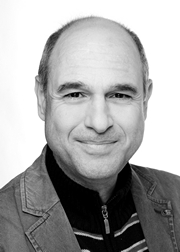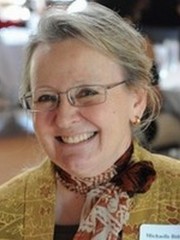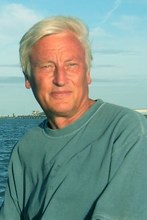Permanent Fellows
Alessandro Bausi

Alessandro Bausi (1963, MA 1988 University of Florence, PhD 1992 Naples Oriental Institute) is a linguist and philologist specialised in Ethiopian (and Eritrean) Semitic languages, philology, and manuscript cultures. He is Full Professor for Semitic Studies and Languages and Literatures of Ethiopia at Sapienza Università di Roma, Faculty of Humanities, Department Storia Antropologia Religioni Arte Spettacolo (November 2023–).
Formerly Assistant (1995) and Associate Professor (2002) of Ethiopic Language and Literature at the University of Naples ‘L’Orientale’, he has been Full Professor (W3) for Ethiopian Studies (Äthiopistik) at Universität Hamburg, Faculty of Humanities, Asien-Afrika-Institut, Abteilung für Afrikanistik und Äthiopistik (September 2009–October 2023). He has been the editor of the journal Aethiopica: International Journal of Ethiopian and Eritrean Studies (2009–2023), founder and editor of its Supplements series (2013–2023), editor of the series Aethiopistische Forschungen (2010–2023); he has also founded and still is one of the editors of the Comparative Oriental Manuscript Studies Bulletin (2015–). He is consultant for Ethiopian and Eritrean languages and studies for the Scriptores Aethiopici of the Corpus Scriptorum Christianorum Orientalium (2010–), the Texts and Studies in Eastern Christianity (2011–); for African studies and linguistics for the Orientalistische Literaturzeitung (2013–2023); he is member of the executive editorial board of Africa (2018–). Coeditor and editor of the Encyclopaedia Aethiopica (IV–V, 2010–2014), Chair of the Comparative Oriental Manuscript Studies networking programme (funded by the European Science Foundation 2009–2014), and head of the European Research Council Advanced Grant Project ‘TraCES: From Translation to Creation: Changes in Ethiopic Style and Lexicon from Late Antiquity to the Middle Ages’ (2014–2019), he has initiated and still heads as scientific director the long-term project of the Academy of Sciences and Humanities in Hamburg ‘Beta maṣāḥǝft: Die Schriftkultur des christlichen Äthiopiens und Eritreas: Eine multimediale Forschungsumgebung’ (2016–2040). He is a member of several scholarly associations, and of the Academia Europaea (2012–), the Accademia Ambrosiana (2014–), the Ethiopian Academy of Sciences (2018–), the Academy of Sciences and Humanities in Hamburg (2019–), and of the Accademia Nazionale dei Lincei (2023–).
He has been a member of the Centre for the Study of Manuscript Cultures at Universität Hamburg since its foundation, member of the Sonderfoschungsbereich ‘Manuskriptkulturen in Asien, Afrika und Europa’ (2011–2020), and Co-spokeperson of the Cluster of Excellence ‘Understanding Written Artefacts: Materiality, Interaction and Transmission in Manuscript Cultures’ (2019–2023). He is coordinator of the working group ‘Theory and Terminology’ (2012–) and one of the editors of the series of the Occasional Papers (2023–).
He has carried out field research in Ethiopia and Eritrea and extensively published on textual and manuscript cultures. He has especially contributed on the earliest phase of ancient scribal, linguistic, and literary history of Ethiopia, particular on late-antique Greek-Ethiopic translations, on epigraphy, on canonical, hagiographical, and liturgical collections, and on textual criticism.
Michaelle Biddle

During her years at Wesleyan University (USA) Michaelle Biddle served as Clerk of the Works for it $10 million 1980s library expansion, Assistant to the Librarian for Budgets, and Collections Conservator and Head of Preservation Services. In the early 1990s she established a comprehensive book conservation program and lab at Wesleyan University and annually trained undergraduate students and adult apprentices in paper and book conservation. This program was expanded with the assistance of grants from the Adelphic Education Fund.
Since 2008 Ms. Biddle has been consulting conservator for Northern Nigerian manuscript collections, supported by grants from the U.S. Ambassador’s Cultural Preservation Fund, U.S. State Department Speaker Grant, the Fufore Family of Yola, the Islamic Manuscript Association, the Ford Foundation, the Nigerian TetFund, and the Prince Claus/Whiting Foundations. Current projects concern the Jos Museum Arabic Manuscript Collection in Nigeria funded by Gerda Henkel Stiftung and the library of Maalim Muhammed bin Idris in Zanzibar funded by PCWF.
Her interest in and work with Islamic manuscripts dates to her undergraduate studies at the University of Texas at Austin in Middle Eastern Anthropology (Archaeology) and History followed by an internship at the School of Oriental and African Studies, London. Whilst Islamic art bibliographer at Kegan Paul, Trench, Trubner & Co. (Antiquarian Oriental and African booksellers) she studied with Roger de Coverly of the London School of Printing, Roger Powell, Harold Plenderleith of the British Museum, and others in book arts and conservation, with particular emphasis on 19th century and Islamic materials. She holds a Masters in Library Science with Honors (University of Rhode Island), a Certificate of Advanced Study in Archival Management (National Archives USA/Washington University), and a Masters in Archaeology and Heritage with Distinction (University of Leicester UK). In the early 1990s she established a comprehensive book conservation program and lab at Wesleyan University that annually trained undergraduate interns and adult apprentices in book conservation. In 2015 she established a manuscript conservation laboratory at Arewa House, Ahmadu Bello University Kaduna and in 2019 one at The Centre for Trans-Sahara Studies, University of Maiduguri, Nigeria. She retired from Wesleyan January 2019.
As an archivist she has consulted on the management of archives at numerous US private schools and Cairo American College. As an archaeologist she has participated in digs in Pacqueme, Mexico; Hueco Tanks, Texas; Petra, Jordan; Cotocotuyoc (Cuzco Valley), Peru; Kazakl'i-yatkan (Urgench), Uzbekistan; and Pompeii, Italy.
In addition to paper and book conservation she is particularly interested in material cultural analysis of West African bookmaking and manuscript production, inks, pigments, dyes and paper watermarks. A partial list of her publications include: Saving Nigeria’s Islamic Manuscript Heritage and Conservation in a Box 2008; “Inks in the Islamic Manuscripts of Northern Nigeria”, Journal of Islamic Manuscripts 2011; “Recent preservation and conservation activities for Northern Nigerian manuscripts in Arabic script” JIM 2012; “Conservation of sub-Saharan African Manuscripts”, Annual Review of Islam in Africa 2014; “New strategies in using watermarks to date sub-Saharan Islamic manuscripts” in The Arts and Crafts of Literacy: Islamic Manuscript Cultures in Sub-Saharan Africa 2017; “Arbib, Ydlibi and Suru (Hakuri): Three Arabic Script Watermarks…” and “Note on a Dated Tunisian Watermark (1860-1861)” in The Trade in Papers Marked with Non-Latin Characters 2018; “Conserving Africa’s Islamic Manuscript Heritage” Care and Conservation of Manuscripts 16 - 2018; and with Dr. Bidur Bhattarai Step by Step Guide to Manuscript Surface Cleaning and Making E-Flute Phase Boxes for Manuscripts, CSMC Written Artefacts as Cultural Heritage No.1 - 2020.
With CSMC, she has conducted multiple manuscript conservation training workshops in Mali at the Djenne Manuscript Library and in Bamako (Paroles de sagesse conference and the Timbuktu Project); Arewa House ABU Kaduna, Nigeria; Kathmandu as an aspect of the “Safeguarding the Manuscripts in Nepal” project; and National Archives Hanoi, Vietnam.
Ulrich Bismayer

Ulrich Bismayer (currently Mineralogisch-Petrographisches Institut, Universität Hamburg) studied Mineralogy and Crystallography at the Leibnitz-Universität Hannover and finished his PhD in 1982 with the thesis ‘Structural phase transitions in Pb3(P1-xAsxO4)2’. From 1983 to 1984, he spent a Postdoc research period at the Clarendon Laboratory, Dept. of Physics in Oxford, UK in the group of Mike Glazer. He returned to Germany and completed his habilitation in Mineralogy-Crystallography with the thesis ‘Hard mode Raman spectroscopy and its application to ferroelastic and ferroelectric phase transitions’ in 1990. He subsequently became Principal Investigator in the SFB 173 at the Universität Hannover where he also established a European research project with the Earth Science Department of the University of Cambridge, UK and the Physics Department of the Universidad del Pais Vasco in Bilbao, Spain for a term of six years on the subject of ‘Thermodynamic instabilities in framework minerals’. In 1993, Bismayer became Professor of Mineralogy and Crystallography at the Universität Hamburg where he set up a close collaboration between the Department of Earth Sciences and DESY. He received support for Postdocs, PhD students and experimental facilities through the DFG, the BMBF, the EU, the Alexander-von-Humboldt Stiftung and the DLR. In addition, Bismayer acted as speaker for four universities in a joint BMBF collaboration that eventually built the new beamline P24 at PETRA III which became fully operational in 2019.
In Hamburg, Bismayer organised national conferences DGK 1997, DMG 2002 and several European Science Foundation symposia as well as international workshops. He also strengthened interdisciplinary collaboration with numerous colleagues in Europe and on the international scale in Canada, the United States, South America, Russia and in Asia. At the Universität Hamburg, he was a member of the Academic Senate for 17 years. For the 2007/2008 term, he served as President of the German Mineralogical Association (DMG), as an elected member of a German Research Foundation Fachkollegium from 2004 to 2008 as well as a member of the DFG Senate’s Committee for Geosciences. In 2000, he became Senior Research Fellow of the University of Cambridge, Dept. of Earth Sciences, UK and was honoured by the DMG with the A.G. Werner medal in silver in Bonn in 2018.
|
Professor Dr Bismayer about his work at the CSMC: My curiosity about symmetry related questions got me addicted to ways of information transfer via patterns, graphics and colours on artefacts which led to my enthusiastic commitment to the Cluster of Excellence ‘Understanding of Written Artefacts’ and the Centre for the Study of Manuscript Cultures. The decision of the Centre’s Steering Committee to make me a Permanent Fellow caught me completely by surprise. I’m is extremely grateful for this great honour and look forward to the upcoming challenges, especially for someone like myself, who still needs to learn the language of the Arts. |
Charles Melville

Charles Melville holds a BA 1st-class Hons. in Oriental Studies (Arabic & Persian, University of Cambridge, 1972), an MA in Islamic History (LSOAS, 1973) and a PhD. in Oriental Studies (University of Cambridge, 1978). At present, he is Professor Emeritus of Persian History at the University of Cambridge and Emeritus Fellow of Pembroke College. He has been a long-serving member of the Governing Council of the British Institute of Persian Studies (British Academy) and has served as its President since 2017. He has been Director of the Shahnama Project since 1999 and was President of The Islamic Manuscript Association from 2006 to 2019, both based in Cambridge. Professor Dr Melville has published extensively on the history and culture of Iran in the Mongol to Safavid periods (thirteenth to seventeenth centuries), on the illustration of Persian manuscripts and on the epic Shahnama of Firdausi. Recent publications include several edited volumes, such as Persian Historiography, volume X of the History of Persian Literature, The Mongols’ Middle East. Continuity and transformation in Ilkhanid Iran with Bruno de Nicola, Shahnama Studies III with Gabrielle van den Berg, and The Timurid century. The Idea of Iran, volume IX. He currently has a Leverhulme Trust Emeritus Fellowship on the ‘Illustration of Persian History’.
|
Professor Dr Melville about his work at CSMC: My research is currently concentrating on the topic of the ‘Illustration of history’, that is, examining the way various chronicles were illustrated (or not) – what lay behind the choices of which text to illustrate and which scenes to depict within those chronicles, and how the painting relates to the written text. I am also seeking to expand my work into Central Asia (Transoxiana) and northern India, to explore the shared political notions of government and common themes of historical literature, especially between Safavid Persia, Mughal India and Uzbek Central Asia. |
